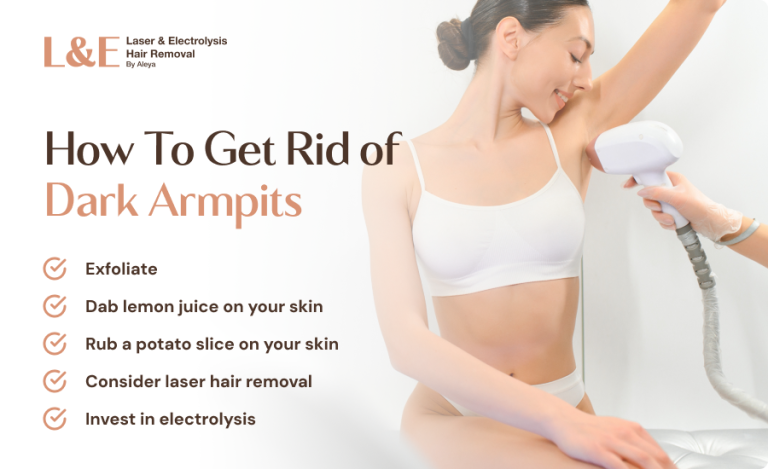Ingrown Hairs, Razor Burn, and Razor Bumps: What’s the Difference?

If shaving wasn’t tedious enough, it can often leave you with some annoying side effects. Many times, these side effects show up in the most irritating places, like underarms or bikini line. You have most likely experienced these pesky little red bumps after shaving, but do you know how to identify them? Are they ingrown hairs, razor bumps, or razor burn?
It’s important to know the differences between these conditions so you can treat your skin properly. Here we will provide an overview of the differences between these common skin irritations and how to treat them.
Ingrown Hairs
Ingrown hairs occur when the hair growth retreats back towards to follicle and continues to grow underneath the skin. The area surrounding the ingrown hair will become red and inflamed, causing it to look similar to other red bumps. You can identify these by looking closely to see the hair trapped underneath the skin’s surface.
The main cause of ingrown hairs is bacteria. When razors are left in the shower, they collect a lot of unhealthy bacteria that can make their way into your pores and irritating the hair follicle.
There are several techniques for treating ingrown hairs that will not further damage the skin. The best is to begin by exfoliating to gently coax the hair to the surface. From there, you can remove the hair with sanitized tweezers. Just be sure to only go after the hair if it is ready to come out. Digging into the skin can make the problem worse and cause scarring. Read more on treating ingrown hairs at home here.
Razor Burn
Razor burn is the rash that occurs after shaving. Typically an entire area of skin will be afflicted and appear red and blotchy and will feel itchy, hot, and stinging.
Skin will commonly experience this inflammation if you shave without a protective lubricant like shaving cream, shaving too quickly, or with a dull razor.
The best way to prevent razor burn is to be gentle with the skin. Avoid rushing through shaving, replace your razor frequently, and not letting the blades clog with hair or shaving cream. To treat razor burn apply plenty of moisturizer to cool down and soothe the irritated skin, as you would a sunburn.
Razor Bumps
The term “Razor Bumps” is often used interchangeably with “Razor Burn”, but they are actually two unique conditions. Razor bumps are more acute, and refer to the bumps that form at the follicle when the hair begins to grow back after shaving.
Similar to an ingrown hair, razor bumps typically occur as a result of bacteria entering the pore and causing small, red bumps to surface. They don’t always result in ingrown hairs, but can be painful and unsightly, especially in areas such as the bikini line.
These can often be hard to avoid, but are best treated by keeping the area clean and hydrated. Applying a natural antiseptic ointment, such as tea tree oil, to the affected area helps to gently clean the bumps of bacteria. As always, moisturize well afterwards and avoid fabrics that will chafe the irritation.
How to Avoid Ingrown Hairs, Razor Burn, and Razor Bumps
There are many precautions you can take to reduce your chance of ending up with ingrown hairs or another skin irritation. Start by finding products that work for your skin. Use shaving cream that is gentle and hydrating. Exfoliate often and moisturize regularly.
However, the best way to avoid any of these conditions is to steer clear of the razor all together. Switch from this harsh and taxing form of hair removal to something more forgiving on the skin. Opting for laser hair removal or electrolysis will guarantee to make these skin conditions a thing of the past.
Laser Hair Removal in Long Island
For laser hair removal and electrolysis in Long Island, schedule an appointment at Laser by Aleya.


